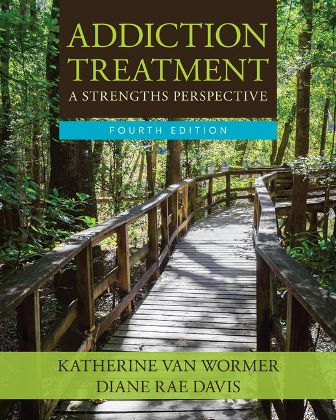Description
Test Bank For Addiction Treatment 4th Edition by Katherine
1. How have various societies at various times tried to control the use of alcoholic beverages? What are the control policies today?
2. Describe the role that wine played in the lives of ancient Greeks, Romans, and Hebrews.
3. Describe the connection between xenophobia and Prohibition. How did the Mafia enter the picture? Recount the reasons for the repeal of Prohibition.
4. Discuss three major themes that emerge in a study of the history of substance use by the American population and others.
5. Compare and contrast Prohibition and the war on drugs in today’s world.
6. According to the book, all of the following are themes in the history of substance abuse and addiction:
a. cultural traditions breed different reactions to the same drug
b. America has had a love/hate relationship with alcohol
*c. Russia has done much to advance the course of addiction treatment
d. increased drug potency tends to be associated with prohibition
7. This cultural/historical group encouraged complete abstinence from alcohol consumption:
a. Greeks
*b. followers of Islam
c. Romans
d. Hebrews
8. Which national or indigenous population introduced marijuana into the “New World”?
*a. the Spaniards
b. the Caribbean Indians
c. the Mayans
d. Indians
9. Cocaine use as coca leaf chewing originated with:
a. Ancient Greeks
*b. South American indigenous peoples
c. Ancient Romans
d. Judaism
10. The following is a legacy from the Puritans according to the text:
a. religiosity by the state
*b. punitiveness
c. total abstinence
d. emphasis placed on leisure
11. Early American colonists used alcohol for all except which of the following?
a. protection against disease
b. as a solvent
c. as an antiseptic
*d. as a deodorant
12. Technological advances often exceed a people’s ability to handle it. What was the turning point for alcohol?
a. wineries
b. the cotton gin
*c. distillation
d. electricity
13. In Colonial times the tavern was criticized because of which factor with which it was associated:
*a. male drunkenness
b. gambling by kids
c. being the headquarters of the suffrage movement
d. slave rebellion
14. In Colonial America strong drink was thought to:
a. cause rickets
b. induce pain
c. cause seizures
*d. protect against disease
15. The behavior most clearly associated with the temperance movement was:
a. the enslavement of people
b. vegetarianism
*c. moderation of drinking
d. total abstinence from all alcoholic beverages
16. Historically, the Chinese have had the biggest problem with which addictive drug?
*a. Opium
b. Cocaine
c. Marijuana
d. Ecstasy
17. The lesson that we can learn from Shane Butler’s insightful analysis of treatment in Ireland is the need for:
*a. compatibility between societies’ belief systems and publicly instituted policy
b. abstinence as a focus of treatment
c. a return to Catholic principles
d. reunification of north and south in Ireland
18. The American experiment with “prohibition – the noble experiment:”
*a. caused corruption of police and politicians.
b. was successful in reducing heavy alcohol consumption.
c. reduced the crime rate.
d. was not supported by female suffragists.
19. Philadelphia physician Benjamin Rush is known for recommending:
a. pre-temperance ideology.
b. the 12 Step program.
*c. medical treatment for chronic “inebriates.”
d. providing combat soldiers with liquor to prevent trauma.
20. Breweries popped up in the Midwest related to the arrival of____________.
a. the Irish.
b. the depression.
*c. the Germans.
d. the colonists
21. The __________ political family made their money through selling illicit alcohol directly to people at the highest levels of organized crime?
a. Johnson
*b. Kennedy
c. Lincoln
d. Bush
22. Which national group is singled out in the text for their healthy enjoyment of good wine?
a. Norwegians
b. Irish
c. Russians
*d. Italians
23. Which country is considered the world’s leading producer of cocaine?
a. Mexico
b. Canada
*c. Colombia
d. Cuba
24. About 90% of the world’s heroin comes from?
a. Colombia
b. Mexico
c. Sweden
*d. Afghanistan
25. The following concepts or notions were derived from Bill W. except for:
a. powerlessness
b. carrying the message to other persons
c. seeking divine guidance
*d. empowerment
26. Jellinek’s major contribution was
a. in his work with war trauma
*b. to identify multiple alcoholisms
c. display his knowledge of the Greek alphabet
d. to introduce the harm reduction model.
27. Box 2.1 describes a treatment center in Norway that:
*a. is based on a 12 Step approach.
b. operates within a system that lacks nationalized health care.
c. utilizes medical management such as Naltrexone in treatment
d. uses a harm reduction approach
28. The harm reduction model was practiced in Europe in modern times chiefly in connection with:
a. the spread of methamphetamines.
b. the spread of knowledge concerning U.S. practices
*c. fear of the spread of HIV/AIDS
d. academic influences
29. The Jellinek curve depicts only the Gamma variety of alcoholism.
a. True
*b. False
30. Alcohol is mentioned 3 times in the 12 Steps.
a. True
*b. False





Be the first to review “Test Bank For Addiction Treatment 4th Edition by Katherine”